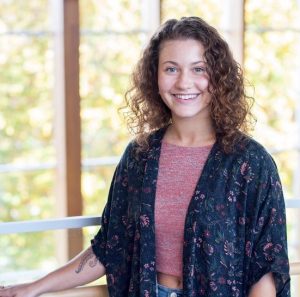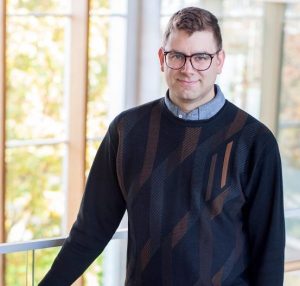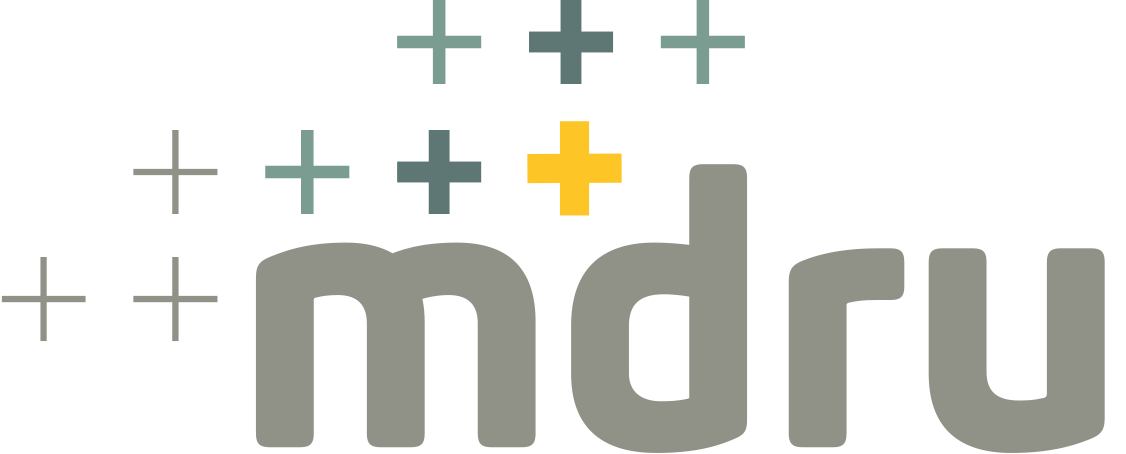Today, three MDRU and BRIMM students received $5000 each in scholarship grants from Geoscience BC. Each year, the not-for-profit earth science organisation awards scholarships to students for British Columbia-focused applied geoscience related to minerals, energy and water resources.
Among the 10 recipients announced today were three of our own students.

Bianca Phillips
Molecular biology in mineral exploration
Bianca’s project involves the evaluation of the application of molecular biology to mineral exploration. The project aims at assessing and developing a more robust method of through-cover mineral exploration. This aids in initial discovery, as well as delineating targets more effectively to contribute to more successful mine development and resource extraction.
Microorganisms are everywhere and extremely abundant in soils, contributing to their statistical power in this study. Microbial communities are very sensitive to subtle changes in subsurface chemistry on short timescales, which is an added advantage when assessing changes in microbial abundances experimentally.
Three main goals drive the project:
- qualifying and quantifying microbial profiles in till above zones of mineralisation relative to background soils and creating database of indicator species for different deposit types,
- evaluating the relationships between geochemistry, physical chemistry, and microbial footprints to determine the driving factors in microbial community shifts, and
- develop practical field and analytical procedures and protocols for the mineral exploration industry.
For more information, visit Exploration Geochemistry Initiative
 Pearce Luck
Pearce Luck
Organic compounds as pathfinders in Cu porphyry exploration
Organic compound pathfinders are a promising and under-researched tool for non-petroleum based mineral exploration through cover. In terrain that is buried by sequences of till and glaciolacustrine deposits, geochemical signals from traditional commodity and pathfinder elements may be complex and far travelled. Organic compound concentrations in soil increase in response to economic mineralisation and have the potential to identify targets beneath overburden.
The purpose of this research is the advancement of organic compound pathfinder techniques to explore for Cu-porphyry deposits in British Columbia.
This project aims to identify the physical, chemical, and biological links between organic compound abundances at the surface and the buried footprints of economic mineralisation. Development of a robust, cost effective, and statistically tested analytic technique for organic compounds in soils at ultra-trace concentrations will be a significant milestone for this area of research. Targeted sampling of multiple soil horizons will provide guidance on the optimal media to collect for future field work.
For more information, visit Exploration Geochemistry Initiative
Sterling Vanderzee
Carbon mineralization in ultramafic tailings: a prospect for stabilizing mine waste and reducing greenhouse gas emissions
Sterling’s research focus is on developing technologies to make B.C. home to the first greenhouse gas neutral nickel mine while providing the co-benefits of stabilizing the mine’s tailings and potentially reducing the capital costs associated with the project’s development. This can be achieved through carbon mineralization, where carbon dioxide gas (sourced from the atmosphere or flue gases) is effectively turned into stone by promoting the formation of secondary magnesium carbonate minerals that act as a cement that stabilizes the tailings.
In order to investigate this process and develop new low-cost methods to accelerate the reactions, Sterling conducts experimental studies that are paired with geochemical and geometallurgical models. This approach allows to determine what step in the reaction series is currently causing the “bottle neck” that controls the overall rate at which carbon dioxide can be sequestered, and from this they can “fine tune” the process to achieve better results. Furthermore, the geometallurgical models helps to identify zones of the nickel deposit that will produce tailings that contain minerals that are naturally very reactive with carbon dioxide so that we do not need to employ expensive technologies that utilize high temperatures, high pressures, and/or chemicals to make less reactive minerals sequester carbon dioxide.
In addition to reducing the economic costs and environmental risks associated with storing nickel tailings, this approach could further improve the project’s economics by reducing carbon taxes. Ultimately, nickel mining could remove more carbon dioxide from the atmosphere than it produces, and may provide an additional revenue stream through carbon trading.
For more information, visit Carbon sequestration in chrysotile mine tailings



